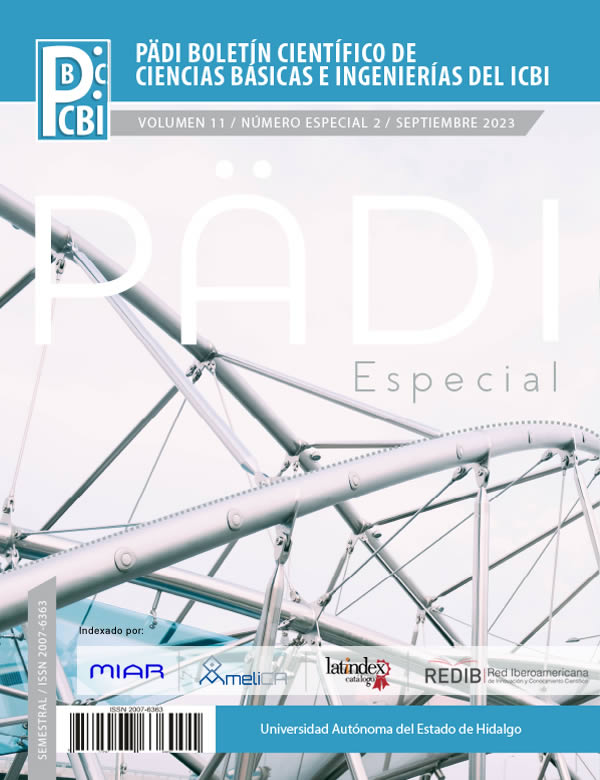Detection of water stress level in romaine lettuce plants through CNN
Abstract
Agriculture in Mexico is dealing with significant challenges in the area of water. An alternative to address this problem is the implementation of modern agricultural techniques that allow precision farming methods in greenhouses that can produce during all seasons of the year and with more efficient use of water. For this, intelligent systems are necessary to monitor and control the resources for plant growth according to the conditions they present. This article describes the design and training of a convolutional neural network (CNN) to detect the degree of dehydration of romaine lettuce plants through images. The experiments show 83% precision and sensitivity of the CNN model in identifying the level of dehydration, and 98.8% in both metrics, considering a tolerance of plus/minus one level of difference concerning the real one.
Downloads
References
Arsenovic, M., Karanovic, M., Sladojevic, S., Anderla, A., y Stefanovic, D. (2019). Solving current limitations of deep learning based approaches for plant disease detection. Symmetry, 11(7).
Aversano, L., Bernardi, M. L., y Cimitile, M. (2022). Water stress classification using convolutional deep neural networks. JUCS - Journal of Universal Computer Science, 28(3):311–328.
Baranwal, S., Khandelwal, S., y Arora, A. (2019). Deep learning convolutional neural network for apple leaves disease detection. SSRN Electronic Journal.
Bechtsis, D., Moisiadis, V., Tsolakis, N., Vlachos, D., y Bochtis, D. (2017). Scheduling and control of unmanned ground vehicles for precision farming: A real-time navigation tool. En HAICTA, pp. 180–187.
Conagua (2020). Programa Nacional Hídrico 2020-2024, Comisión Nacional del Agua, Secretaría de Medio Ambiente y Recursos Naturales Cd. de México, México.
Conagua (2022). Numeragua Edición 2022, Comisión Nacional del Agua, Secretaría de Medio Ambiente y Recursos Naturales, Cd. de México, México.
Concepcion II, R., Lauguico, S., Almero, V. J., Dadios, E., Bandala, A., y Sybingco, E. (2020). Lettuce leaf water stress estimation based on thermovisible signatures using recurrent neural network optimized by evolutionary strategy. En 2020 IEEE 8th R10 Humanitarian Technology Conference (R10-HTC), pp. 1–6.
FAO e ITO (2018). E-agriculture in action: drones for agriculture, Food and Agric. of the U. N. and Intl. Telecomm. Union, Bangkok.
FAO e ITO (2021). Digital agriculture in action: artificial intelligence for agriculture, Food and Agric. of the U. N. and Intl. Telecomm. Union, Bangkok.
Fernandes, H., Moriones, E., Garcia, A., Barrero Mendoza, O., y Albiero, D. (2020). Agricultural unmanned ground vehicles: A review from the stability point of view. REVISTA CIENCIA AGRONOMICA, 51.
Gonzalez-de Santos, P., Fernandez, R., Sepúlveda, D., Navas, E., y Armada, M. (2020). Unmanned Ground Vehicles for Smart Farms. Idris, I. y Sani, M. (2012). Monitoring and control of aeroponic growing system for potato production. pp. 120–125.
Inegi (2020). Censo de población y vivienda 2020, Instituto Nacional de Estadística y Geografía, México. Kai, T., Li, J., Zeng, J., Asenso, E., y Zhang, L. (2019). Segmentation of tomato leaf images based on adaptive clustering number of k-means algorithm. Computers and Electronics in Agriculture, 165.
Kamarudin, M. e Ismail, Z. (2022). Lightweight deep cnn models for identifying drought stressed plant. IOP Conference Series: Earth and Environmental Science, 1091:012043.
Lakhiar, I., Jianmin, G., Syed, T., Chandio, F. A., Buttar, N., y Qureshi, W. (2018). Monitoring and control systems in agriculture using intelligent sensor techniques: A review of the aeroponic system. Journal of Sensors, 2018:18.
Mammarella, M., Comba, L., Biglia, A., Dabbene, F., y Gay, P. (2021). Cooperation of unmanned systems for agricultural applications: A theoretical framework. Biosystems Engineering, 223:61–80.
Montoya, A., Obando, F., Morales, J., y Vargas, L. (2017). Automatic aeroponic irrigation system based on arduino’s platform. Journal of Physics: Conference Series, 850:012003.
Naji, I. (2020). The drones impact on precision agriculture, Master thesis, University of Texas, El Paso, U.S. NASA (2006). Progressive plant growing has business blooming. Environmental and Agricultural Resources. New York: NASA Spinoff, pp. 64–77.
Ngugi, L., Abelwahab, M., y Abo-Zahhad, M. (2020). Recent advances in image processing techniques for automated leaf pest and disease recognition - a review. Information Processing in Agriculture, 8.
Ochoa-Noriega, C., Aznar-Sánchez, J. A., Velasco Muñoz, J., y Álvarez, A. (2020). The use of water in agriculture in mexico and its sustainable management: A bibliometric review. Agronomy, 10:1957.
Rahman, R., Arko, P., Ali, M. E., Khan, M., Apon, S. H., Nowrin, F., y Wasif, A. (2020). Identification and recognition of rice diseases and pests using convolutional neural networks. Biosystems Engineering, 194:112–120.
Sharif, M., Khan, M., Iqbal, Z., Azam, F., Lali, M. I., y Javed, M. (2018). Detection and classification of citrus diseases in agriculture based on optimized weighted segmentation and feature selection. Computers and Electronics in Agriculture, 150.
Copyright (c) 2023 Jesús Guillermo Bermúdez-Rojas, Jorge Enrique Luna-Taylor, Fernando Daniel Von-Borstel-Luna, Jesús Alberto Sandoval-Galarza

This work is licensed under a Creative Commons Attribution-NonCommercial-NoDerivatives 4.0 International License.













